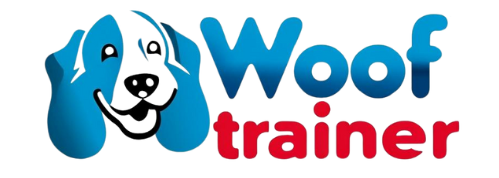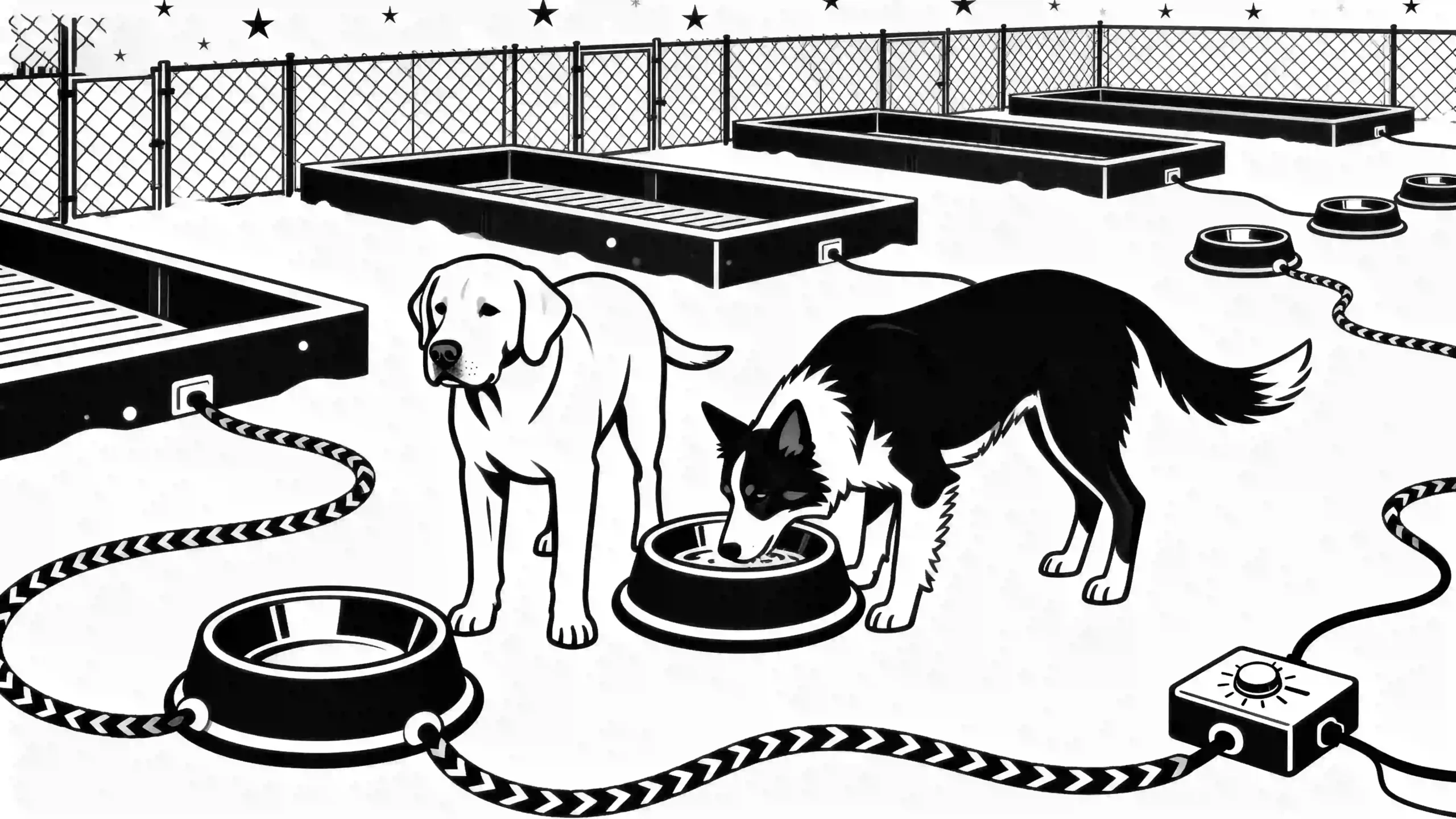When you run a kennel or breeding facility in a region with long, cold winters, you need hydration systems that endure. Heavy-duty heated dog bowl setups are more than accessories—they’re core parts of your kennel equipment. This tutorial walks you through selecting, installing, and maintaining heavy-duty heated dog bowl systems so your dog’s stay hydrated, healthy, and you spend less time on freeze-ups and replacements.
1. Understand Your Hydration Needs First
Before buying anything:
- Count dogs & flows: How many dogs drink at any given time? Mothers + litters tip consumption dramatically.
- Volume requirement: Estimate water usage per dog per day in winter (they drink more when water’s colder). Multiply by safety factor so you won’t run dry.
- Temperature extremes: Know your coldest expected temperatures—down to −20 °C if possible—and how much insulation your kennels already provide.
- Power availability: Ensure you have enough outlets, circuits, and that wires/outlets are rated for outdoor/kennel use.
With that data, you’ll know what capacity, wattage, protection, number of bowls you need.
2. Key Features to Look for in a Commercial-Grade Heavy-Duty Heated Dog Bowl
Here are must-haves:
| Feature | Why It Matters in a Large Kennel |
|---|---|
| Large capacity (multiple quarts / gallons) | Fewer refills, more buffer when many dogs drink together. |
| Robust build material (18/8 stainless steel, thick ABS or cold-resistant plastics) | Resists dents, rust, cracking; lasts longer with heavy use. |
| Thermostat or temp sensor control | Bowl only heats when needed, saving energy and reducing wear. |
| Heavy-duty cord protection | Dogs chew, run across bowls; commercial-grade cord protection (metal wrap, thick insulation) matters. |
| Stable, tip-resistant base | Bowls get nudged or bumped—rubber feet, wide bases prevent spills and damage. |
| Easy cleaning & sanitation | Smooth surfaces, removable components, dishwasher-safe parts reduce labor. |
A real product example: the Farm Innovators 6-qt Round Heated Plastic Pet Bowl offers 1.5 gal capacity, thermostatic control, heavy-duty anti-chew cord protector, and cold-weather plastic that resists cracking.
3. Sizing & Installation: How to Deploy for Efficiency
To get maximum value:
- Map placement: Place bowls near dog runs or inside covered areas to reduce exposure to wind or snow. Heat loss from wind is a big drain on performance.
- Spacing & number: Use multiple bowls rather than one huge bowl if dogs are spread out. That shortens travel distance and reduces wasted trips.
- Dedicated circuits & GFCI protection: For safety and continuous power, the circuits that run your heated bowls should be dedicated, well protected, and inspected.
- Elevate slightly: Elevation reduces snow buildup and prevents melting snow from pooling around electrical components.
4. Maintenance & Durability Tips
To keep them running season after season:
- Daily checks: Verify water is liquid, heating elements are working, cords are intact, and no parts are frozen or damaged.
- Weekly deep clean: Scrub bowls, remove mineral deposits, sanitize. Steel bowls work better than porous plastics in sanitizing.
- Inspect cords, sensors, thermostat housing: Cold weather can cause insulation to crack, wire jackets to degrade. Replace parts before failure.
- Winter off-seasons: Store or cover bowls not in use; draining and cleaning before freezing conditions helps avoid damage from ice expansion.
Durability tests (from product reviews) show that bowls with cold-weather plastics or steel handles survive repeated freeze-thaw cycles better than basic plastic bowls. The Farm Innovators model for instance includes “cold weather plastic technology.”
5. Safety & Health Aspects for Commercial Use
Beyond just keeping water liquid:
- Protect dogs from slurping icy shards; ensure surfaces are smooth.
- Sanitize regularly to avoid bacterial growth in warm water; puppies are especially vulnerable.
- Avoid over-heating: bowls should not warm water beyond comfortable range. Sensors or thermostats need calibration.
- Ensure cords, plug connections, heating elements are properly rated for kennel environment (wet, cold, possibly iced surfaces).
Also tie in with broader policies like those described in Reducing Labor Costs with Heated Dog Bowl Systems—safety and health reduce costs from illness, injury, and equipment failures.
6. Cost vs ROI: What to Expect
You’ll invest more upfront for commercial-grade units, but returns often come quickly:
- Less labor: staff spend fewer hours breaking ice, replacing bowls, or chasing frozen water.
- Reduced veterinary / health incidents: better hydration often correlates with fewer cases of dehydration or kidney issues.
- Longer equipment lifespan: quality bowls need replacing less often.
For example, the Farm Innovators 6-qt bowl runs thermostatically, reducing operating time and energy cost compared to always-on heaters. Using several units across multiple runs can amortize cost.
7. Choosing & Comparing Models
When evaluating models, use a checklist:
- Material (steel vs plastic)
- Capacity per bowl
- Wattage and thermostat range
- Cord type (anti-chew, length, connectors)
- Warranty & parts availability
- Maintenance features (removable parts, drain holes, smooth interiors)
Also read durability reviews or durability test comparisons—for example in Durability Test: Heated Dog Bowls That Survive Farm Life—to see how models perform under heavy daily usage.
8. Integration with Broader Kennel Hydration Systems
Your heavy-duty bowls are part of a larger system:
- Combine with insulated water storage, especially in remote runs.
- Use heated bucket or tank solutions where floor bowls aren’t practical.
- Stage backup systems: in case of power loss, either have unheated bowls or water sources inside.
For broader context of features and design, refer to Heated Dog Bowls: The Complete Guide to Keeping Pets Hydrated in Winter, which outlines full hydration systems, including heavy-duty bowls, buckets, power, insulation, budgeting.
FAQ
-
What capacity should I choose for a kennel with 20 dogs?
Estimate water consumption per dog (winter: maybe 1–2× more than summer), then divide across multiple heavy-duty bowls. For 20 dogs, you might use 4-6 large bowls rather than one giant one, to distribute load and reduce risk of total failure. -
Is stainless steel always better than plastic?
Steel is more durable, resists chewing, easier to sanitize, and holds up in repeated freezing and thawing. Heavy-duty plastics work too, especially those rated for cold weather, but often require more replacement and may degrade faster. -
How do I ensure even heating in heavy-duty bowls?
Use built-in thermostats or external sensors; avoid placing bowls in open wind; shelter them; ensure bases are insulated; verify that heating elements are not exposed to direct snow or ice contact. -
What are common failure points in commercial heated dog bowl systems?
Cords being chewed or exposed, thermostat/sensor failure, overflow or frozen base parts, cracking of bowl material under freeze-thaw, surge or power issues, neglect of cleaning leading to buildup and reduced thermal transfer. -
How much can I expect to spend vs save?
A heavy-duty heated bowl might cost 2-3× more than a basic bowl. But savings come through reduced labor, fewer replacements, fewer vet bills. Kennel operators often report that a season of winter tasks (ice breaking, emergency water replacement) is cut by 30-60% with good installations.


